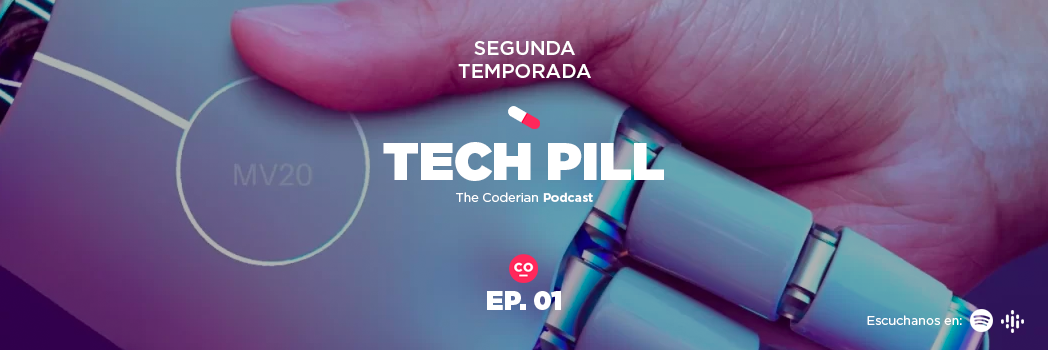By Roxana Ruscitti, Quality Manager Specialist at Coderio.
In January 2020, Coderio began the path of commitment to quality. A journey that, without a doubt, had been brewing for a long time but, from that moment on, would be formalized to be never abandoned.
The development and implementation of the Quality Management System (QMS) under the ISO 9001:2015 standard, very shortly after the birth of the company, definitely meant a significant challenge for all levels and functions of the organization, as well as a promising opportunity to improve and position in the market.
What leads a company to take that big step? Why is the continuous search for quality important? And why is ISO 9001 the best for it? We will try to answer these concerns and many more. Join us!
Red flag: risks vs. opportunities
Every Department defines its business strategy by thinking of that cursed word that scares us so much, but it is nevertheless always present: risk. When we think about it, our mind inevitably begins to plan a series of measures to counteract it, dispel it, and, if possible, try to eliminate it.
According to ISO international standards and its macrostructure or High-Level Structure, risk is the effect of uncertainty on objectives. This definition is given by ISO 31000 (Risk Management).
In other words, risk is the effect of uncertainty when achieving what we want. But it all depends on the approach of our perspective. There is no single way to interpret it: “Something goes wrong” (example: a loss) or, on the contrary, “something goes better” (example: a benefit).
Here a much friendlier concept appears, which would be the positive effect of how uncertain reaching a result is: opportunity. Its flip side, then, is the risk: if something goes wrong or we obtain a loss, the risk would be the negative effect of the uncertainty of reaching a result.
Risk-based business planning (now that we know that risk and opportunity go hand in hand) allows us to prevent losses and profits. By determining my strategy based on risks and opportunities, I will be able to know what effects will arise -positive or negative-, prioritize them through their value or criticality, and, from there, take actions to take advantage of those benefits (provided by the opportunities) or well, mitigate losses (evidenced by risks).
In summary, the risks and opportunities are closely related to the objectives because they are results and concrete goals which should be coherent with our strategy or business policy.
When quality means growth
Let’s look at some tips that help us understand the importance of being certified by such a prestigious standard.
First of all, without a doubt, the great benefit is that it collaborates in the internal improvement of processes. This, in turn, reduces operating and non-quality costs, keeps responsibilities clear, and helps the healthy interaction of processes.
Implementing a quality management system has also allowed us to have a critical look capable of noticing opportunities for continuous improvement. A QMS brings positive consequences for any company since it boosts the public and market image, increases the trust of stakeholders -customers, suppliers, government and control agencies, collaborators, leads, businesses in the same sector, etc.-, and enables it to carry out a constant evaluation of the performance of our business internally and externally.
In addition, it applies to organizations of any size, culture, and sector.
About successful methodologies
Let’s go back to Coderio. The software service company has a Strategic Management Procedure that establishes, among other criteria, the methodology for identifying the internal and external context, its follow-up, the relevant interested parties, and their most pertinent needs and expectations.
So our Strategic Management Procedure materializes in the risk and opportunity matrix, where each factor of internal context is recorded, including processes and products, as well as external needs and requirements of the interested parties to determine risks and opportunities. Through our GIUT methodology (an acronym in Spanish that means Severity, Importance, Urgency, and Trend), actions are planned for its approach and the effectiveness achieved.
In this regard, we organize biannual follow-up meetings, as indicated in the Strategic Management Procedure, whose objective is to give continuity to the process and record the conclusions in the Strategic Management Follow-up Minutes.
The coderian (r)evolution
As we have seen, in January 2020, we began the path of commitment -now formally in place- to quality.
Months later, at the end of October, we had our first Phase I Audit, and in the following months, we applied to the Phase II Audit, at which time Coderio received its first ISO 9001:2015 certificate. A remarkable achievement for the entire coderian team!
Going through the first certified year, in 2021, we passed our first Maintenance Audit, which revalidated the current certificate. By then, the processes had become much more nourished, with proposals for improvement and optimization, a much thicker payroll, more job positions and new profiles, and a much broader and richer structure both horizontally and vertically.
In 2022, the improvements, growth, and organizational changes in Coderio continued. With all the processes aligned, we spent the second year of certification of the Quality Management System with specific plans aimed at achieving objectives, planning, change monitoring, approaches to risks and opportunities, and updating documented information through procedures and using professional tools and platforms.
In October 2022, the second Maintenance Audit took place, and the current certificate was recommended again.
Meanwhile, we continue to generate improvements in our processes with a keen eye, not only for increasing the satisfaction of our clients and other stakeholders but also for the quality of our services. Today we seek to broaden our horizons. We are also working on integrating our SGC with information security management (SGSI ISO 27001).
In 2023, our quality certificate turns three years old, so we are already preparing for the Recertification Audit! It is gratifying to see how our team has been working all year for that moment, united and focused on providing quality service, inward and outward.
By Roxana Ruscitti, Quality Manager Specialist at Coderio.



